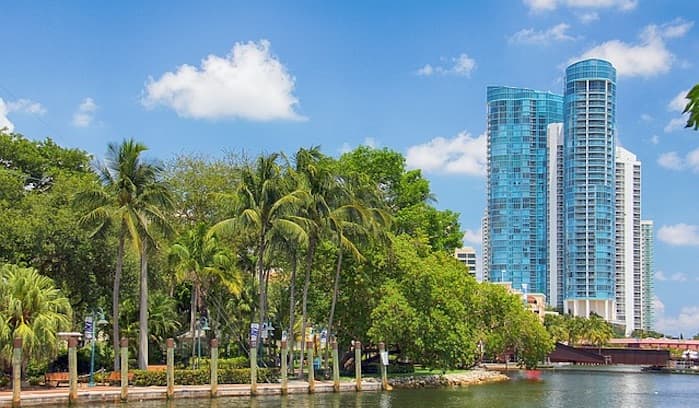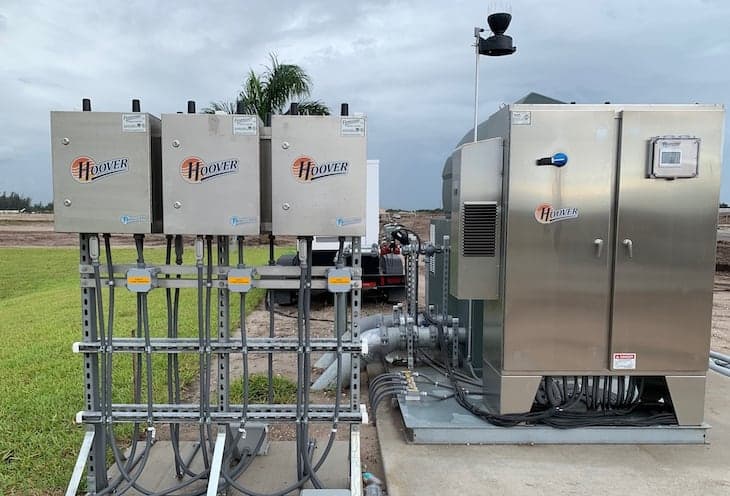
Over the centuries irrigation has become a more refined operation, moving from digging canals to control the flow of water or using underground sources and primitive tools to lift the water from a river to an adjoining field. For much of history, the main requirement for irrigation came from agriculture, but in recent years the demand for water has shifted to include both commercial and residential properties. This is particularly true in a state like Florida, which experiences extremes in terms of both temperatures and rainfall across the different parts of the state – i.e. coastal and inland – and at different times of the year. The kind of green and vibrant environment which surrounds visitors to Florida at all times of the year plays a huge part in making it one of the most popular tourist destinations in the whole of the US, and it wouldn’t be possible without the widespread use of state of the art irrigation systems.
When describing irrigation solutions as ‘state of the art’ we’re referring to the kind of total irrigation solutions designed and installed by Hoover. The era when an irrigation system consisted solely of a mechanical operation designed to shift water from one place to another has long since passed. Smart irrigation systems don’t simply move water to a specific schedule but can instead respond in real-time to changes in circumstances in order to calibrate exactly how much water to deliver and where to deliver it.
This brings two massive benefits. The first and most obvious is that the plant life which is being watered will be maintained in the best possible condition, thanks to a finely tuned irrigation schedule which can be set to deliver different amounts at different times over as many separate zones as are needed. The second benefit is the amount of water – and therefore money – that a smart system of this kind is able to save. This is particularly appealing if you happen to live in Florida, a state which has the second-highest utility bills – including water charges – in the whole of the USA according to a report from 2019.

Using smart irrigation technology to help minimize water waste won’t just save money, it will help you play a part in the state-wide drive to conserve as much water as possible.
The South Florida Water Management District, for example, has launched a series of water conservation programs, aimed at preparing the state to deal with the fact that, by the year 2025, the population is projected to rise by 6 million to more than 24 million, while, over the same period, the demand for fresh water within South Florida itself is expected to rise by a massive 22% to 4.3 billion gallons every single day.
Against this backdrop, the use of smart irrigation technology almost becomes the civic duty of anyone concerned about the future viability of Florida’s water supply. Although the average annual rainfall in South Florida, at 53 inches, is amongst the highest in the country, the figures on population and water usage underline just how precious every single drop of that water is.

Installing a custom-designed smart irrigation system with water-saving functions and sensitivities built-in will enable you to get the most out of all available water. Some "smart" features include:
Responsive Controllers and Sensors
The latest irrigation controllers don’t just work to a set schedule – i.e. watering at predetermined times of the day – they can also respond to changes in the weather conditions. Having been set with reference to the type of plants being watered, as well as the soil in which they are growing and any slopes or inclines which might impact on the flow of the water, a smart irrigation system can also adjust the watering of the plants to take account of factors such as higher temperatures or unexpected rainfall. Self-adjusting controls of this kind make sure that your plants and lawns receive only the water they need each day and not a drop more.
Flow Sensors
A sensor, working alongside the control system, can monitor the amount of water actually travelling through the system and therefore flag up problems such as leaks or damaged sprinkler heads. If the number of gallons per minute being delivered to a particular zone of the landscape is more than it should be then the flow sensor will pick this up immediately. It will also flag the issue as a problem for the user and, most importantly, turn off the supply to the zone in question to stop water being wasted until remedial action can be taken.
Weather-data based Controllers and Sensors
Like the responsive flow control systems detailed above, built-in sensors provide data to control the flow of water in response to changes in the weather and environment. Meteorological data from trusted sources, data collected by sensors about the rate of water loss from plants and rate of water evaporation from the soil surface combine to determine irrigation needs. The smart irrigation controller is then triggered to make real-time, automatic adjustments in watering schedules
Using a simple example, the system won’t distribute water to the landscape – even if it’s usually scheduled to operate – if it is raining or has recently been raining.
Soil-data based Controllers and Sensors
In the same way, sensors are being used to control the amount of water-based on data from weather and plant transpiration, soil moisture sensors can be placed into the ground in the root zones of lawns, flower beds and planted areas. By measuring and relaying data about the moisture levels present in the soil, these sensors provide the data to the smart controllers so that only the right amount of irrigation is applied, keeping the soil within a range capped with an upper and lower moisture target.
Drip Irrigation
Ask most people to picture an irrigation system and the chances are they’ll be thinking of traditional sprinklers. While they are a convenient means of delivering large amounts of water in a quick and fairly targeted manner, there’s no avoiding the fact that a percentage of all the water being delivered is likely to be blown away from the desired area by winds, or evaporate while being delivered. A drip irrigation system, on the other hand, delivers the water via slow drips from emitters which are positioned near to the root zones of the chosen plants.
In spite of all the technology available we believe the most powerful irrigation management is achieved by combining the engineering - irrigation pump stations, filtration systems, pumps, decoders, pipes and so on – with smart irrigation technology. Hoover's answer is a total irrigation solution that helps our customers successfully monitor and manage their irrigation 24/7, 365 days a year, making good decisions and saving money - because they have constant access to a true picture of what’s happening with their irrigation and access to both real-time and historical data.

Once the smart irrigation system is commissioned, water consumption and energy use can be more economically and effectively managed; overwatering or underwatering doesn’t go undetected. Combined with the ability to completely control and monitor water flow and its use in any location on single or multiple sites, smart irrigation helps ensure irrigation field zones are balanced, helps in the diagnosis of non-functioning valves and broken or leaking pipes. There’s a reduction in lost dollars from a daily management perspective and maintenance and repair bills are reduced too. Data gathering and reporting are always available.
Across the board, smart irrigation technology has the capacity to help us reduce irrigation water consumption and improve resource management overall, while achieving lower maintenance costs and reducing the ongoing costs of irrigation repairs, sod replacement and fertilizer.